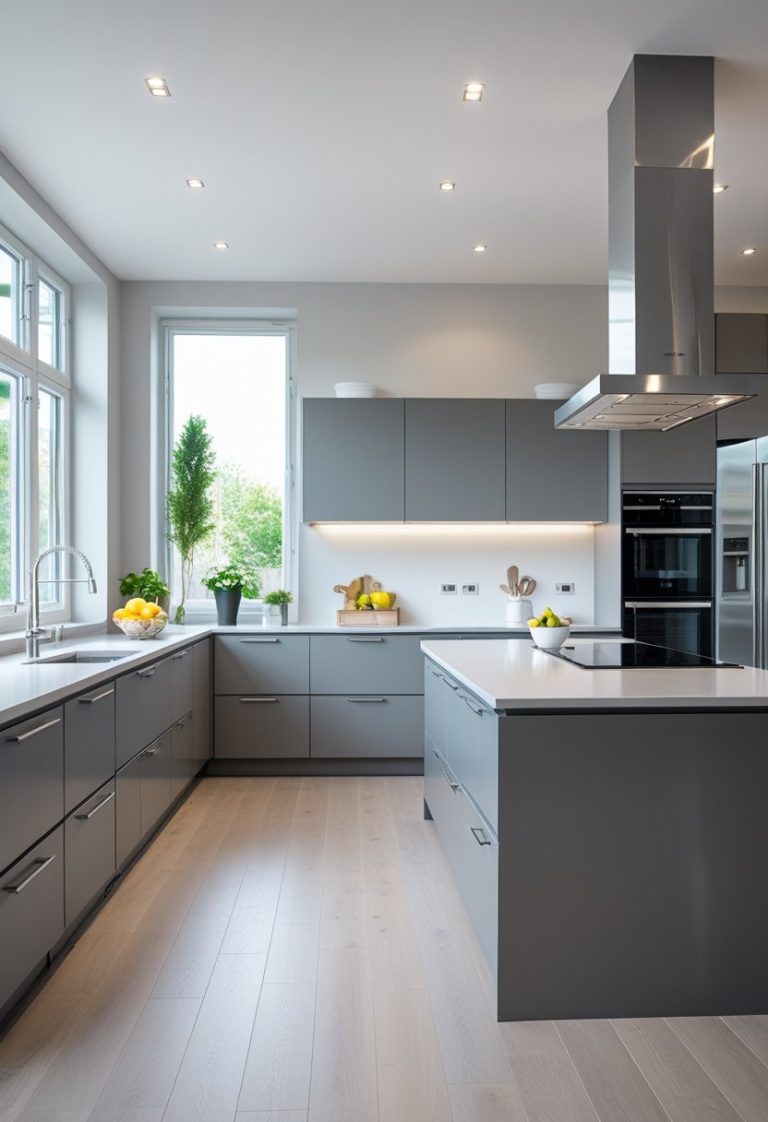The Best Country Kitchen Designs of the Year
Combining modern sleekness with rustic charm creates a kitchen design that balances warmth and functionality. The best country kitchen designs of the year blend natural materials like reclaimed wood and stone with clean lines and minimalist finishes to achieve a cozy yet contemporary space. This approach ensures timeless style without sacrificing practicality.
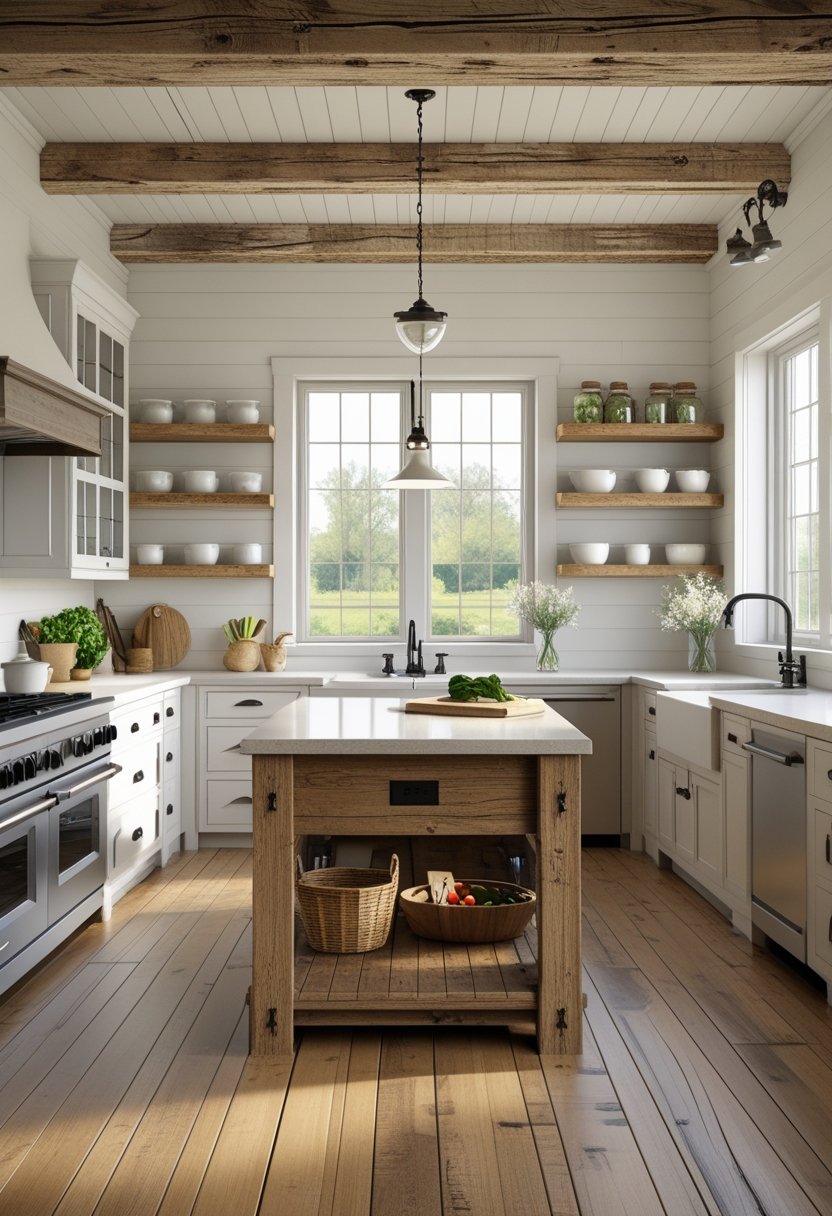
These designs often feature open shelving, farmhouse sinks, and the use of metallic accents to enhance the modern feel while retaining a welcoming, homey atmosphere. By mixing textures and elements from both styles, the kitchen becomes a versatile space suitable for both relaxed family gatherings and efficient meal preparation.
Defining the Modern Rustic Country Kitchen
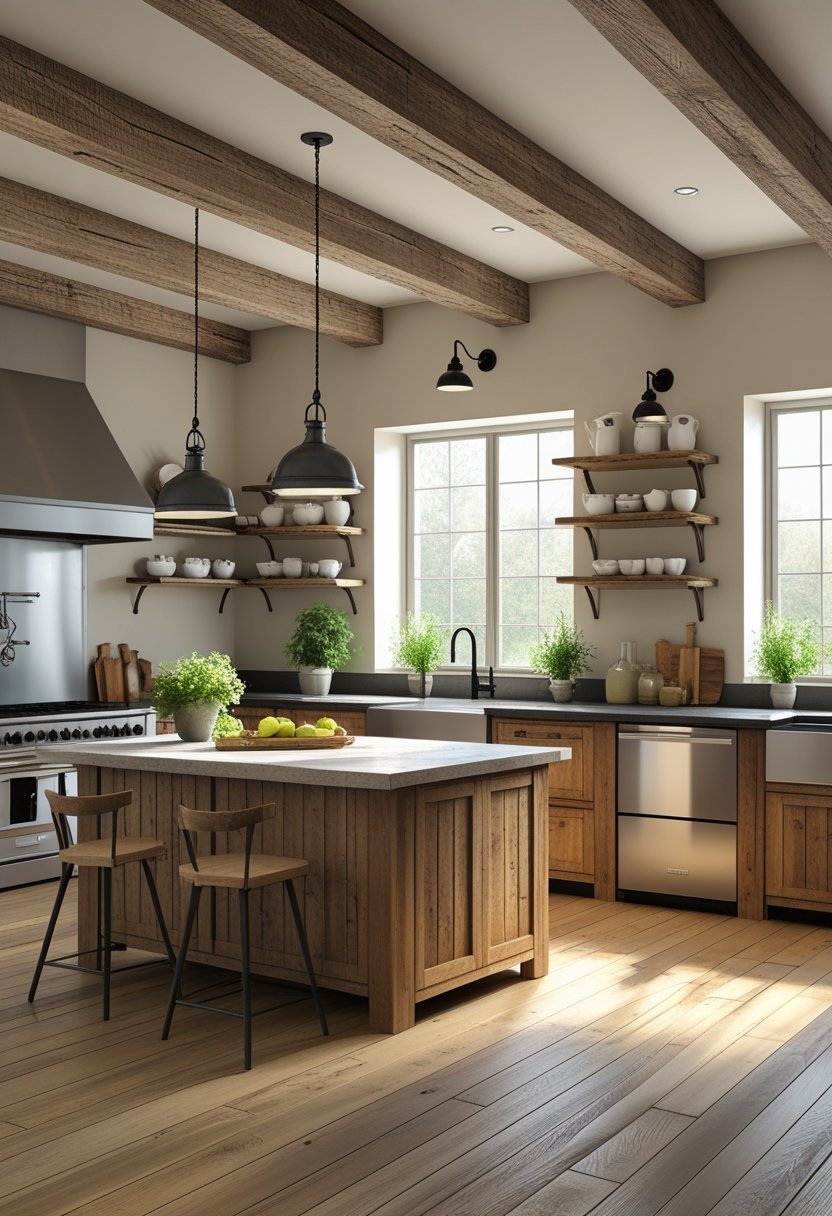
The modern rustic country kitchen blends natural materials with contemporary design, creating spaces that are both functional and inviting. This style merges clean, sleek lines with the warmth of wood, stone, and metal, appealing to those who want comfort without sacrificing sophistication.
Key Characteristics of Modern Rustic Design
Modern rustic kitchens emphasize natural textures such as reclaimed wood, stone countertops, and exposed beams. The color palette often includes earthy tones like soft browns, creams, and warm grays to maintain a grounded atmosphere.
Modern cabinetry tends to be simple and streamlined, featuring clean lines and minimal ornamentation. Contrasting with this, rustic elements bring texture and visual interest, such as distressed finishes and wrought iron hardware. Open shelving made from raw wood or metal is common, balancing function with aesthetic appeal.
Lighting also plays a significant role, often combining industrial or vintage-inspired fixtures that add character while supporting ample task lighting.
Balancing Modern and Rustic Elements
A successful modern rustic kitchen achieves harmony by carefully mixing sleek, contemporary components with rougher, more traditional materials. For instance, stainless steel appliances and smooth quartz countertops can coexist with reclaimed wood beams or a farmhouse sink.
Functionality is prioritized through ergonomic layouts and modern conveniences but softened by rustic materials that add tactile warmth.
This balance avoids feeling too cold or overly vintage. Instead, it creates an inviting kitchen where modern efficiency meets timeless charm. Thoughtful accents like woven storage baskets and vintage-style Edison bulbs help unify the look.
The Appeal of Rustic Charm in Contemporary Homes
Rustic charm brings a sense of comfort and nostalgia, grounding modern homes in nature and history. It encourages use of organic materials and handmade details that evoke simpler times without sacrificing current lifestyle needs.
In contemporary homes, this warmth offsets often minimalistic interior styles, making the kitchen feel welcoming and lived-in. The rustic aesthetic encourages connection through communal cooking and casual gatherings.
It also supports sustainability by reusing materials and emphasizing longevity over trends. This authenticity appeals to homeowners seeking spaces that tell a story while accommodating modern culinary technology and design trends.
Core Materials and Textures
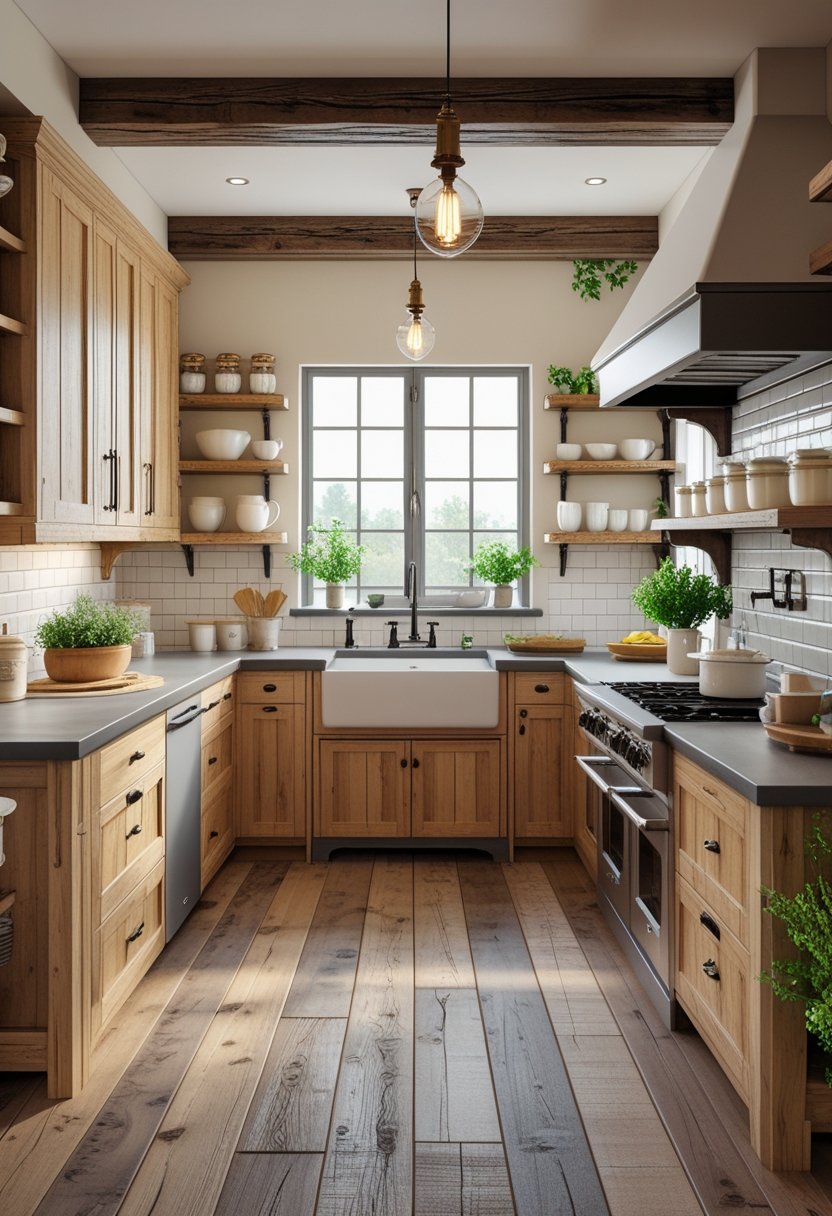
The blend of modern and rustic kitchens centers on selecting authentic, natural materials that offer warmth alongside durability. The emphasis lies in wood and stone, with a focus on textures that create visual interest without overwhelming the space.
Reclaimed Wood in Kitchen Design
Reclaimed wood is prized for its sustainability and character. Its weathered surfaces and unique grain patterns introduce a sense of history and authenticity into kitchen spaces.
This material is often used for cabinetry, open shelving, and even ceiling beams. It provides contrast when paired with sleek, modern stainless steel appliances or minimalist cabinetry, creating a balanced rustic-modern aesthetic.
Because reclaimed wood varies in tone and texture, careful selection is necessary to maintain cohesion. Proper treatment and sealing ensure longevity and resistance to kitchen wear like moisture and heat.
Natural Stone and Raw Wood Accents
Natural stone surfaces—such as granite, quartzite, or soapstone—offer durability and a tactile quality that complements wood elements. Stone countertops are especially effective at grounding the kitchen visually while supporting heavy use.
Raw wood accents, like butcher block countertops or exposed wood trim, add warmth and softness. These accents provide a natural counterpoint to polished stone and modern metal finishes.
Combining these materials emphasizes authenticity. The stone introduces subtle variations in color and pattern, while raw wood enhances the organic feel without sacrificing function.
Highlighting Natural Textures and Materials
Texture plays a crucial role in rustic-modern kitchens. Rough-hewn wood, veined stone, and woven baskets introduce layers that appeal to both sight and touch.
Using matte or lightly finished surfaces prevents glossiness, reinforcing the natural look. Textures can be highlighted through elements like shiplap walls, open shelving with wicker storage, or stone backsplashes that maintain their unpolished surface.
The interplay of natural textures with sleek lines helps avoid an overly rustic or dated appearance. Instead, it creates a dynamic space that feels inviting yet contemporary.
Signature Features of Modern Country Kitchens
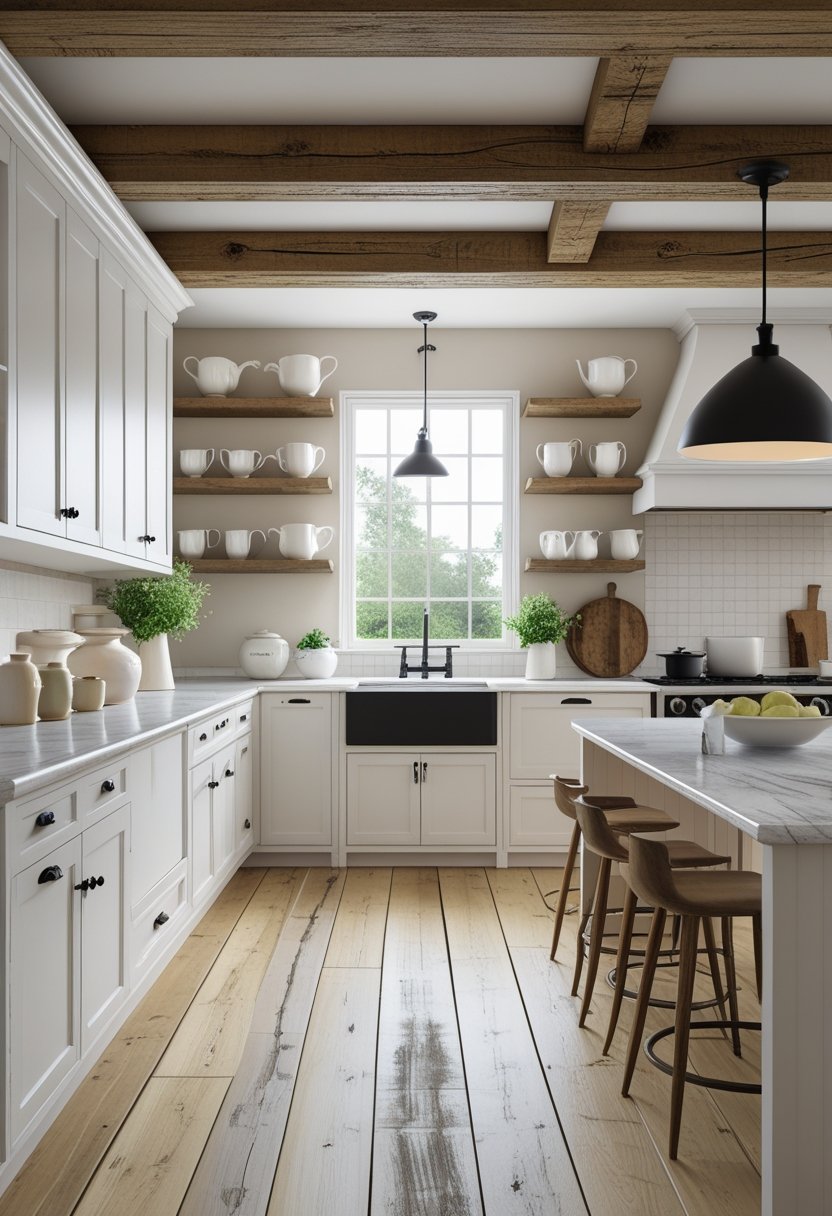
Modern country kitchens blend natural materials with sleek, functional elements to create warm yet practical spaces. Key components often include structural wood details, open storage concepts, and distinctive fixtures that balance rustic charm with contemporary design.
Exposed Wood Beams and Ceilings
Exposed wood beams serve as a focal architectural element in modern country kitchens. They introduce texture and warmth by showcasing natural wood grain, often left with a whitewashed or lightly stained finish to maintain brightness and an airy feel.
Ceilings with exposed beams provide visual interest without overwhelming the space. These beams typically complement other wooden elements, such as cabinetry or flooring, creating a cohesive look that connects rustic tradition with modern simplicity.
The use of reclaimed or sustainably sourced wood also ties into the eco-friendly values often embraced in farmhouse kitchen design. This combination of aesthetics and responsibility supports both style and function.
Open Shelving and Functional Storage
Open shelving is a staple in modern country kitchens, offering practical storage while enhancing the kitchen’s openness. It allows homeowners to display dishware, glassware, or decorative items, adding personality and easy access to frequently used tools.
Functional storage solutions go beyond shelves, often featuring woven baskets or wooden crates that align with the rustic theme but provide organization. These elements keep countertops clutter-free and maintain the kitchen’s clean, streamlined look.
The blend of open and closed storage strikes a balance between display and concealment, ensuring that the kitchen remains inviting while organized. Materials like light wood or metal brackets reinforce the modern-country aesthetic.
Modern Farmhouse Fixtures
Fixtures in modern farmhouse kitchens marry rustic design with up-to-date technology and sleek forms. Popular options include farmhouse sinks—deep and wide for practicality—crafted from durable materials like porcelain or stainless steel.
Lighting plays a key role with industrial pendant lamps or matte black fixtures that contrast with warmer wood tones. These elements emphasize function without sacrificing style.
Hardware such as shiny knobs or matte pulls on cabinetry reinforces the fusion by introducing refined details. The modern farmhouse fixtures focus on simplicity, durability, and blending old-world charm with new-world convenience.
Modern Touches in Rustic Settings

Balancing rustic charm with modern elements requires thoughtful integration of design features that enhance function without losing warmth. Key elements include streamlined cabinetry, refined countertops, and efficient appliance choices that elevate a country kitchen beyond traditional styles.
Sleek Lines and Minimalist Cabinetry
Minimalist cabinetry emphasizes sleek lines that contrast effectively with rustic textures like reclaimed wood or exposed brick. Flat-front cabinets or those with simple paneling create a clean, uncluttered appearance.
Neutral colors such as soft greys, whites, or muted earth tones keep the look fresh while blending with natural materials. Hardware is often minimal or hidden to maintain a smooth surface and enhance the cabinetry’s linearity.
This approach balances rustic roughness with polished simplicity, providing storage solutions that appear contemporary but fit comfortably within a country kitchen’s organic feel.
Contemporary Countertops and Islands
Modern rustic kitchens often feature countertops made of durable materials with a refined finish, such as quartz or polished concrete. These surfaces offer practicality and a sleek aesthetic that contrasts with the rougher, textured wood or stone elements typical of rustic spaces.
Islands frequently serve as a focal point, combining function with style. Islands with a minimalist design, clean edges, and integrated seating provide workspace without overwhelming the room’s natural character.
Choosing subtle but lasting colors—like charcoal, cream, or soft granite—helps maintain a cohesive balance between rustic warmth and modern sophistication.
Stainless Steel Appliances and Finishes
Stainless steel remains a defining feature in modern kitchens, prized for its clean look, durability, and ease of maintenance. Incorporating stainless steel appliances introduces a polished edge to rustic kitchens.
Appliances like refrigerators, ovens, and dishwashers in stainless steel contrast well with wood or stone, emphasizing a modern aesthetic without sacrificing practicality. Fixtures such as matte black or brushed steel faucets complement stainless steel appliances and reinforce a cohesive look.
This blend creates a kitchen that’s both inviting and functional, elevating rustic surroundings with sleek, contemporary finishes.
Popular Color Palettes and Lighting
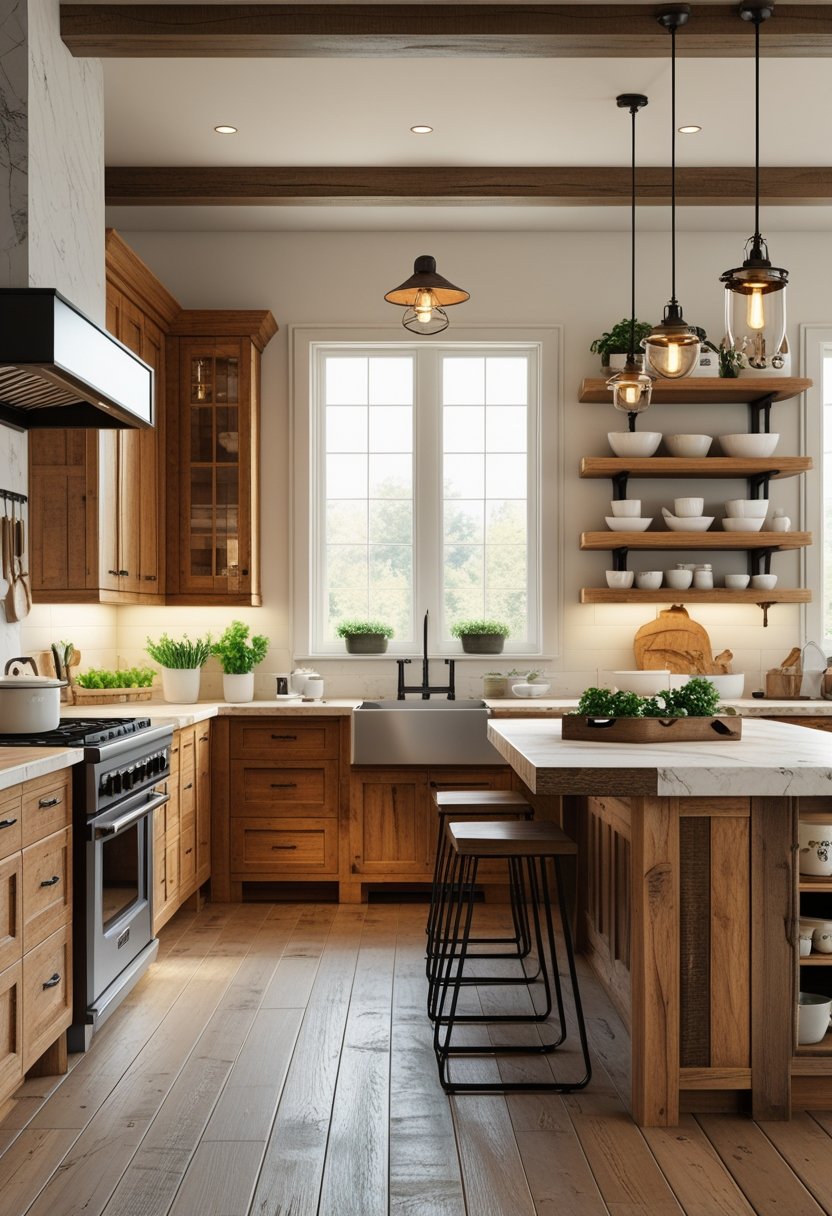
The modern rustic kitchen thrives on a balanced use of colors that highlight natural materials and textures. Lighting plays a key role in creating warmth and emphasizing design elements. Together, the color schemes and lighting choices elevate the kitchen’s comfort and style.
Neutral Schemes and Natural Tones
Neutral palettes dominate in modern rustic kitchens, often combining shades like white, beige, and gray. These colors create a calming base that complements natural wood, stone, and reclaimed materials, preserving the farmhouse’s organic feel.
Wood tones vary from light oak to deep walnut, adding warmth without overwhelming the space. Soft gray cabinetry or walls can balance darker wooden beams or stone counters for contrast. Natural fibers and greenery often accompany these colors to enhance the earthy, grounded atmosphere.
Statement Lighting for the Country Kitchen
Lighting fixtures in modern rustic kitchens serve both functional and decorative purposes. Oversized pendant lamps, often made from wrought iron, aged brass, or distressed metals, provide focal points above islands or dining areas.
Vintage-style bulbs or lantern-inspired designs enhance the farmhouse aesthetic. Incorporating dimmable options helps adjust ambiance, making the kitchen feel cozy during evenings and bright for cooking. Additionally, open shelving with integrated lighting can softly illuminate natural materials and decorative elements.
Contrasting Accents and Mixed Metals
Accent colors introduce subtle contrast without interrupting the rustic harmony. Deep blues, forest greens, or warm burnt oranges appear in textiles or small appliances, grounding the neutral backdrop with a touch of vibrancy.
Mixed metal finishes blend black iron, matte brass, and brushed nickel in hardware and fixtures. This mix adds visual interest and modern edge while maintaining rustic integrity. The varied metal textures work well against wooden surfaces and stone backsplashes, highlighting craftsmanship and detail.
Bringing It Together: Layouts and Decor Ideas

Creating a kitchen that balances modern style with rustic charm depends largely on layout and decor choices. Thoughtful flow and the right natural touches shape a space that feels functional yet inviting.
Open-Plan Spaces and Flow
Open-plan kitchens suit the modern rustic style by enhancing natural light and encouraging easy movement. Removing walls or using partial dividers creates a seamless connection between cooking, dining, and living zones.
Large islands with mixed materials—such as reclaimed wood tops paired with sleek metal bases—serve as functional focal points. They provide prep space, storage, and casual seating without cluttering the room.
Integrating rustic elements like exposed beams or natural wood flooring helps anchor the modern design. Combining clean lines with textured materials maintains balance and prevents the kitchen from feeling too clinical or too cluttered.
Incorporating Greenery and Natural Decor
Natural decor amplifies rustic warmth and softens modern edges. Fresh plants, herbs, or small indoor trees introduce life and color, improving air quality and ambiance.
Using organic materials like stoneware pots, woven baskets, or wooden bowls reinforces the connection to nature. These items add subtle texture and complement green tones often favored in rustic kitchens.
Strategically placed greenery can also act as a visual separator in open layouts. It breaks zones without interrupting flow, maintaining openness while defining cooking or dining spots.

Ana Luisa
Explore in-depth biographies, net worth insights, and exclusive updates on your favorite singers at Trionua.com. Discover the journeys, achievements, and latest news about music’s biggest stars.





